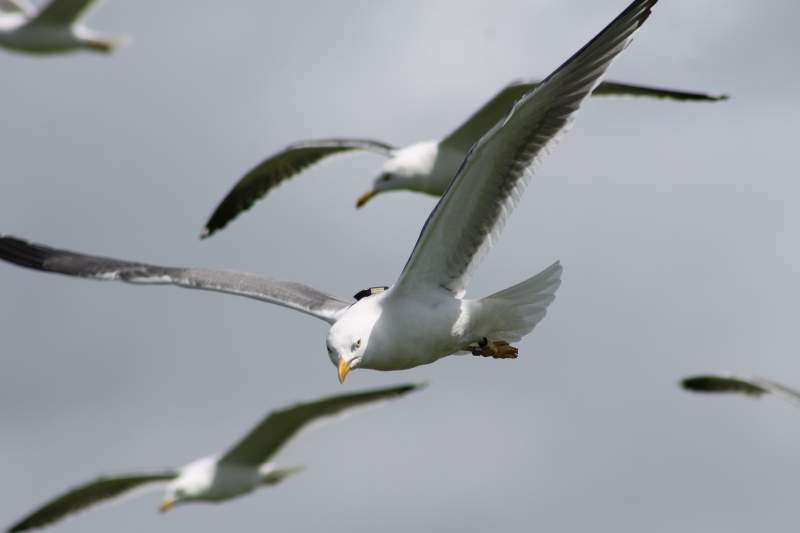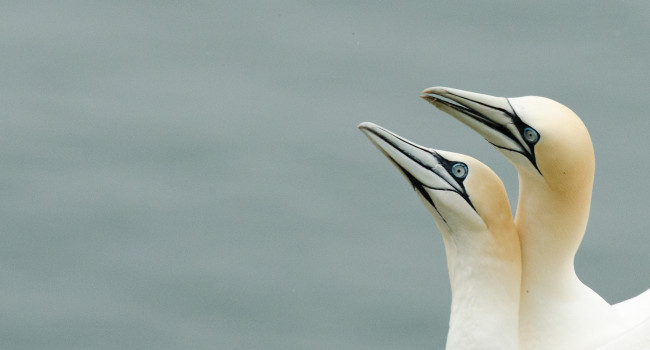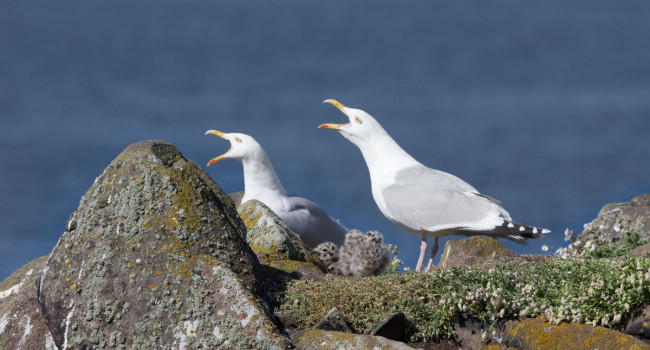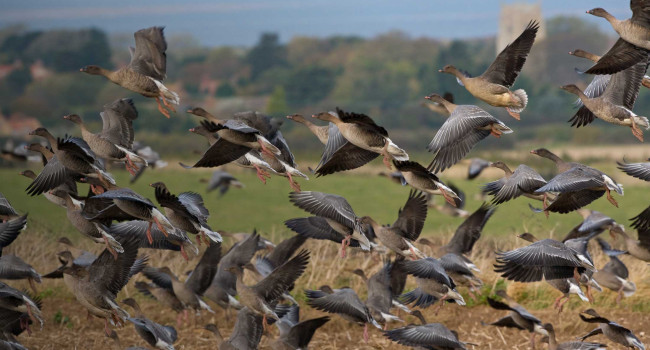Avian vulnerability to wind farm collision through the year: insights from Lesser Black-backed Gulls (Larus fuscus) tracked from multiple breeding colonies
Author(s): Thaxter, C.B., Ross-Smith, V.H., Bouten, W., Clark, N.A., Conway, G.J., Masden, E.A., Clewley, G.D., Barber, L.J. & Burton, N.H.K.
Published: September 2019
Journal: Journal of Applied Ecology
Digital Identifier No. (DOI): 10.1111/1365-2664.13488
Wind turbines both on and offshore are becoming ever more prevalent as governments worldwide seek to tackle carbon emissions. It is important to understand how these structures might affect wildlife. In this study, BTO researchers fitted state-of-the art GPS tags to Lesser Black-backed Gulls breeding at three major UK colonies in order to track their movements throughout the year. By combining the data from the tags with information on wind turbine locations they were able to establish how vulnerable this species might be to collisions.
The GPS devices recorded how fast and how high birds fly, as well as the time birds spent in particular areas. This information was used to estimate the risk of birds colliding with wind turbines when flying at altitudes swept by the turbines’ blades. The results showed that Lesser Black-backed Gulls are vulnerable during the breeding season, when birds are tied to feeding areas close to their colonies, many of which are also in the vicinity of wind farms. Furthermore, birds were also found to be at risk once the breeding season is over and they disperse south to Spain, Portugal and north Africa, where they overwinter. Galicia in northern Spain stood out as a place in which birds were vulnerable on migration, as this region contains a high density of wind turbines, and is a major stopping over destination for the Lesser Black-backed Gull and many other migratory species. Further south, Lisbon and Malaga, where many Lesser Black-backed Gulls spend the winter, were also sites in which birds were vulnerable to collisions.
The results are the first to show where and when birds from specific breeding colonies may be most vulnerable across their annual life cycle, and could be useful in helping to identify where best to site new wind farms to minimise potential harm to wildlife.
Abstract
Wind energy generation has become an important means to reduce reliance on fossil fuels and mitigate against human‐induced climate change, but could also represent a significant human–wildlife conflict. Airborne taxa such as birds may be particularly sensitive to collision mortality with wind turbines, yet the relative vulnerability of species’ populations across their annual life cycles has not been evaluated.
Using GPS telemetry, we studied the movements of lesser black‐backed gulls Larus fuscus from three UK breeding colonies through their annual cycle. We modelled the distance travelled by birds at altitudes between the minimum and maximum rotor sweep zone of turbines, combined with the probability of collision, to estimate sensitivity to collision. Sensitivity was then combined with turbine density (exposure) to evaluate spatio‐temporal vulnerability.
Sensitivity was highest near to colonies during the breeding season, where a greater distance travelled by birds was in concentrated areas where they were exposed to turbines.
Consequently, vulnerability was high near to colonies but was also high at some migration bottlenecks and wintering sites where, despite a reduced sensitivity, exposure to turbines was greatest.
Synthesis and applications. Our framework combines bird‐borne telemetry and spatial data on the location of wind turbines to identify potential areas of conflict for migratory populations throughout their annual cycle. This approach can aid the wind farm planning process by: (a) providing sensitivity maps to inform wind farm placement, helping minimize impacts; (b) identifying areas of high vulnerability where mitigation warrants exploration; (c) highlighting potential cumulative impacts of developments over international boundaries and (d) informing the conservation status of species at protected sites. Our methods can identify pressures and linkages for populations using effect‐specific metrics that are transferable and could help resolve other human–wildlife conflicts.
Notes
This study was funded by the Department for Business, Energy and Industrial Strategy (BEIS), the Offshore Energy Strategic Environmental Assessment research programme, and the Marine Renewable Energy and the Environment (MaREE) project (funded by Highlands and Islands Enterprise, the European Regional Development Fund, and the Scottish Funding Council), in collaboration with the University of Amsterdam and Environmental Research Institute (University of the Highlands and Islands). The authors thank John Hartley (Hartley Anderson) and all at DBEIS for support, and further thank the National Trust, Cumbria Wildlife Trust, The Wildlife Trust of South and West Wales, Natural Resources Wales, APEM Ltd, RSPB and Natural England for permissions, help with fieldwork and discussion.












Share this page